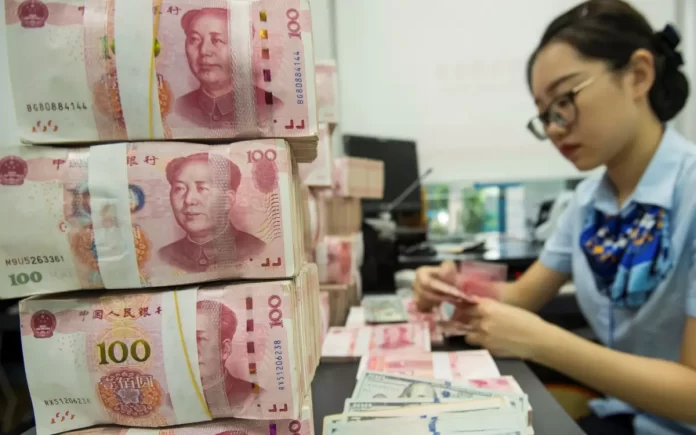In a significant move reflecting China’s evolving financial strategy, Bloomberg reports that the country sold a record $53.3 billion worth of US Treasurys and agency bonds in the first quarter of this year.
This substantial divestment comes as China grapples with a weakening yuan against a strengthening US dollar. The decision underscores a shift away from dollar-denominated assets, with China now turning its focus towards bolstering its gold reserves, which have reached their highest level since 2015.
Also Read: China’s Gasoline Exports Hit Lowest Level Since July 2015 Amid Domestic Recovery
According to data from the US Treasury cited by Bloomberg, China’s recent bond sales mark an escalation of its gradual withdrawal from US debt securities. Estimates suggest that between 2021 and mid-2023, China has offloaded a staggering $300 billion of US Treasurys.
This trend has raised concerns in financial markets about the potential for higher yields, especially considering China’s significant selling activities last year. Now, as trade tensions persist between Beijing and Washington, China appears to be intensifying its efforts to reduce exposure to US assets.
The weakening yuan, coupled with the dollar’s robust performance driven by hawkish US monetary policies, has exacerbated China’s desire to diversify its reserves away from the greenback. This trend is expected to continue, particularly amid rising US protectionism and the threat of escalating tariffs on Chinese imports.
In addition to reducing its reliance on the dollar, China is ramping up its acquisition of gold, with the precious metal now comprising 4.9% of its reserves, the highest level in years. This strategic move reflects a broader global trend among central banks, which are increasingly diversifying their portfolios to mitigate risks associated with dollar dominance and geopolitical uncertainties.
Moreover, China’s efforts to reduce exposure to the dollar are driven not only by economic considerations but also by geopolitical concerns. The fear of US sanctions, particularly following the West’s imposition of dollar restrictions on Russia in 2022, has prompted central banks worldwide to reassess their reliance on the dollar and explore alternative financial arrangements.
As China continues to adapt its financial strategy in response to evolving global dynamics, its actions are likely to have far-reaching implications for the future of global finance and the balance of power in the international monetary system.



